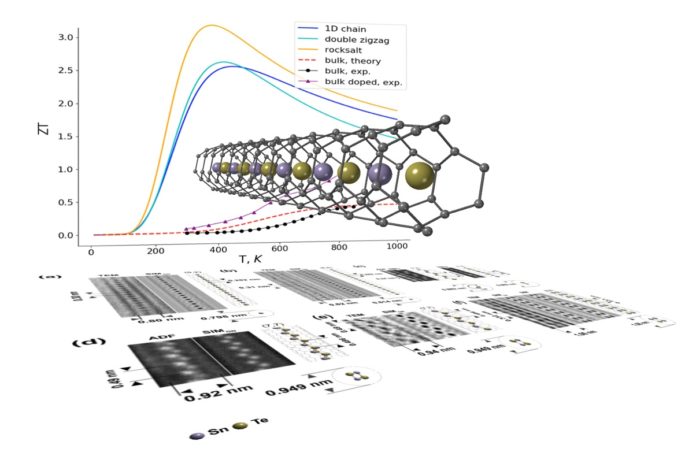In new research by the University of Warwick, scientists have developed a new way of generating sustainable energy. They have developed one-dimensional nanoscale materials that are as thin as an atom and efficient at converting waste heat into electricity.
Scientists noted that they have discovered the most effective thermoelectric materials that can be realized by shaping them into the thinnest possible nanowires. Thermoelectric materials harvest waste heat and change it into energy- and are much looked after as a sustainable and naturally benevolent source of energy.
Moreover, isolated nanowires conduct less heat and more electricity. These unique properties yield unprecedented efficiency of heat-to-electricity conversion in one-dimensional materials.
Nw scientists, along with the group of Dr. Andrew J. Morris from the University of Birmingham, were finding out the crystallization of tin telluride in extremely narrow carbon nanotubes.
In combined theoretical-experimental research, they were able not only to establish a direct dependence between the size of a template and the resulting structure of a nanowire but also to demonstrate how this technique can be used for regulation of the thermoelectric efficiency of tin telluride formed into nanowires 1-2 atoms in diameter.
First author Dr. Vasylenko is excited about what this research could lead to: “This opens up an opportunity for the creation of a new generation of thermoelectric generators, but also for exploration of alternative candidate materials for thermoelectrics among abundant and non-toxic chemical elements.”
The co-authors of the study include Drs Andrij Vasylenko, Samuel Marks, Jeremy Sloan and David Quigley from Warwick’s Department of Physics, in collaboration with the Universities of Cambridge and Birmingham.
With a growing demand for both miniaturization and enhanced efficiency of thermoelectrics, nanostructuring offers a viable route for targeting both objectives.
Their results are reported in the journal ACS Nano.
